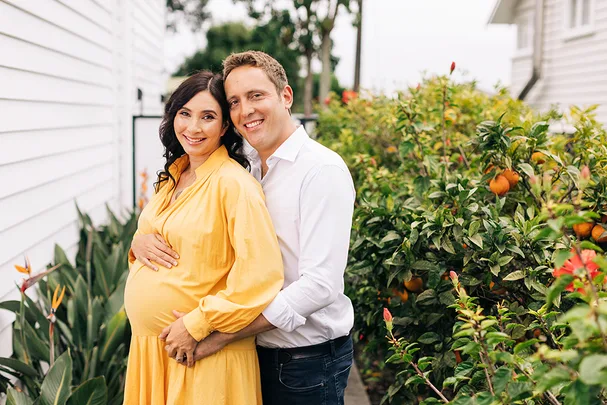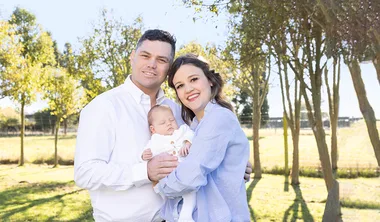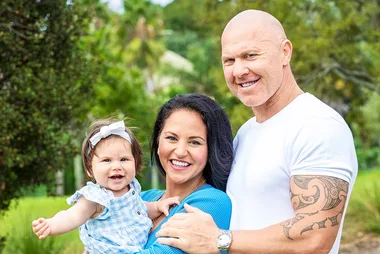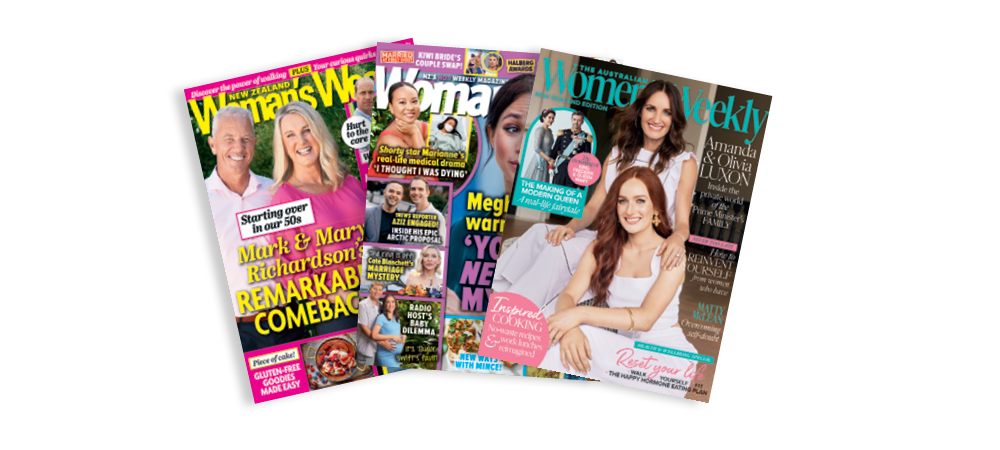My husband Joe and I have dedicated our lives to helping hundreds of thousands of children around the world access science and technology education through our company Nanogirl Labs.
And behind the scenes, we’ve tried for many years to start a family of our own, but that journey has been a difficult one. It’s funny in a way – you spend most of your young adult life trying not to get pregnant, only to find that when you meet your person, it might not be as easy as you thought.
Thanks to a lot of help from science, Joe and I couldn’t be more thrilled to be welcoming twins in a couple of months.
Many expectant parents wait until they are 12 weeks along to announce their pregnancy. For us, it’s taken a lot longer. Our wonderful news comes at the end of six years of intense fertility treatments, which sadly included several failed IVF cycles and miscarriages.
This journey taught us that a positive pregnancy test doesn’t necessarily mean a positive outcome and the heartbreak that comes from celebrating too early.
Along the way, we’ve learned that infertility is something that many people just don’t talk about – even though the data shows that in New Zealand, it can affect up to one in four couples. In sharing our story, we’re hoping to make it easier for others to raise the subject and have more open conversations about the challenges around infertility.
We tried to conceive naturally for a couple of years without success. Eventually, we went to the doctors to run some tests, all of which came out fine. That led to a diagnosis of ‘unexplained infertility’, which is a dreadful expression as it doesn’t give you anything to blame or try to fix.
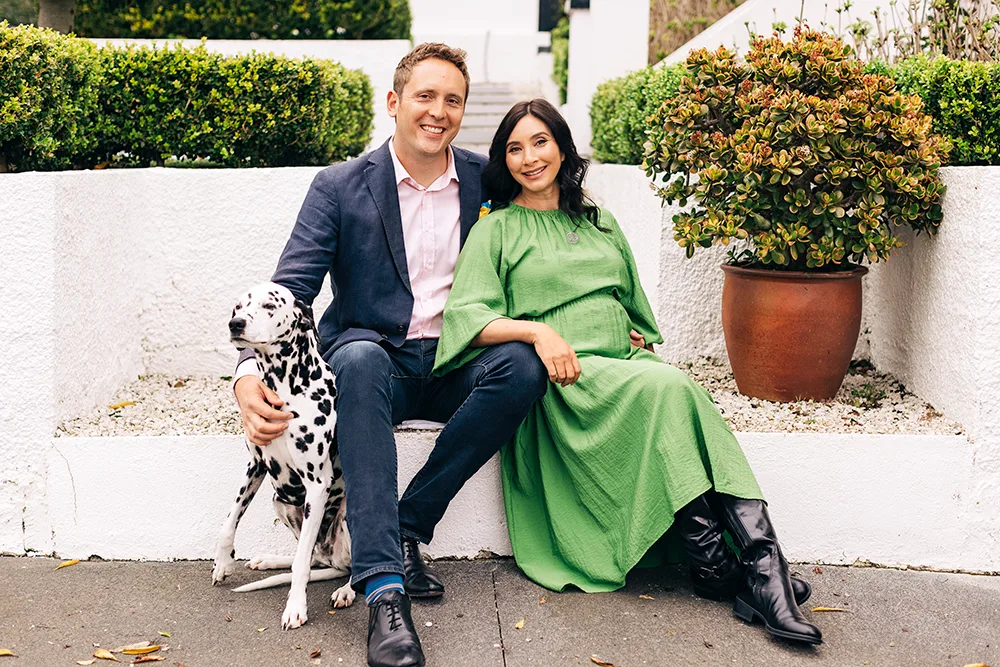
Michelle and Joe’s beloved dog Noodle will be the paw-fect playmate.
I went straight home and used my research skills to see what evidence-based science we could use to help solve the problem. We started IVF treatment almost immediately, and even with the data on risks and odds, I think we were quite naive, genuinely believing that it would work the first time.
After weeks of injecting medication, an egg retrieval process, watching the time-lapse videos of the fertilised egg cells splitting in the Petri dish and going through the egg implantation process, we were sure that we’d done everything we could to start our family.
Joe took the printout from the ultrasound when they implanted the eggs and took it straight over to his parents’ house. ‘That’s the first photo of our child!’ he told them as we celebrated together.
Two weeks later, our pregnancy blood test came up positive and we were ecstatic. We started to make plans, walking around baby stores looking at what we might need. A few days later, we were devastated. The second blood test showed the pregnancy wasn’t going to continue.
To numb the pain, we booked straight in for another IVF round. The second attempt was almost a carbon copy of the first, another disappointing outcome with no concrete reason why. We took a break for a couple of months to grieve and process what had happened, but neither of us give up easily, so decided to keep going on the IVF journey.
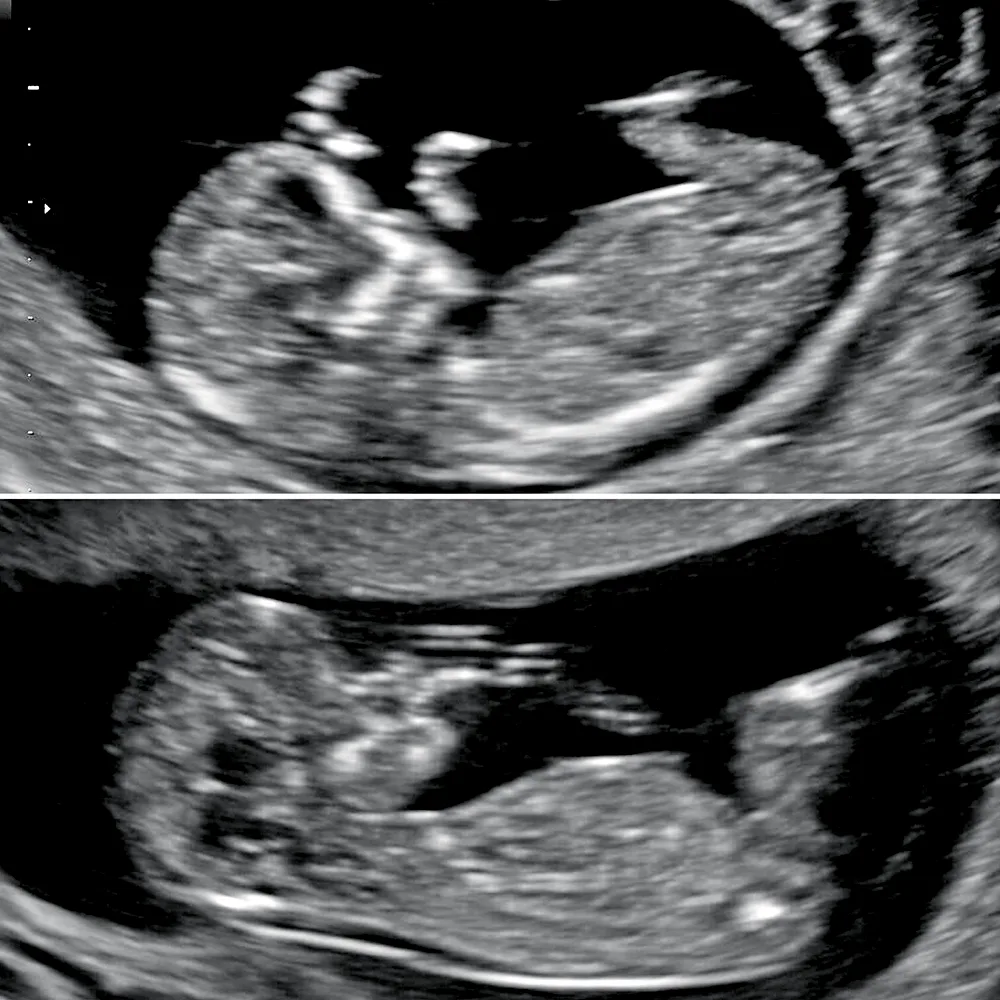
The ultrasound that made all the pain worthwhile.
Balancing a busy career with multiple IVF rounds, my life became a handbag full of syringe needles, medications, blood tests, scans and phone reminders, ensuring I was mixing and taking my fertility medication on time. One of those times coincided with an evening event I was working. I rushed to the public bathroom, balanced all of my syringes on the toilet-roll holder, while hiking up my ball gown in the cubicle, so I could administer the drugs into my stomach.
Having a doctor you feel comfortable with is so important. We are so grateful for Dr Phill McChesney at Fertility Associates, who let me add my scientific brain to the process. I’d bring new academic papers to our appointments and he’d evaluate if cutting-edge research could help increase our success rate.
Eighteen months ago, after our seventh IVF round failed, I felt physically and emotionally broken. We had reached the point of exhaustion. We had the conversation – it was time to accept defeat.
We took a year off to look into all of our options – adoption, surrogacy, egg donation etc – and in the end decided we were going to throw everything at it for one more try.
Our twins are the product of all the love in the world and, fittingly for the Nanogirl theme, a whole lot of science too. We are so grateful to the doctors, nurses, embryologists, friends and family who’ve helped us.” on this journey.
